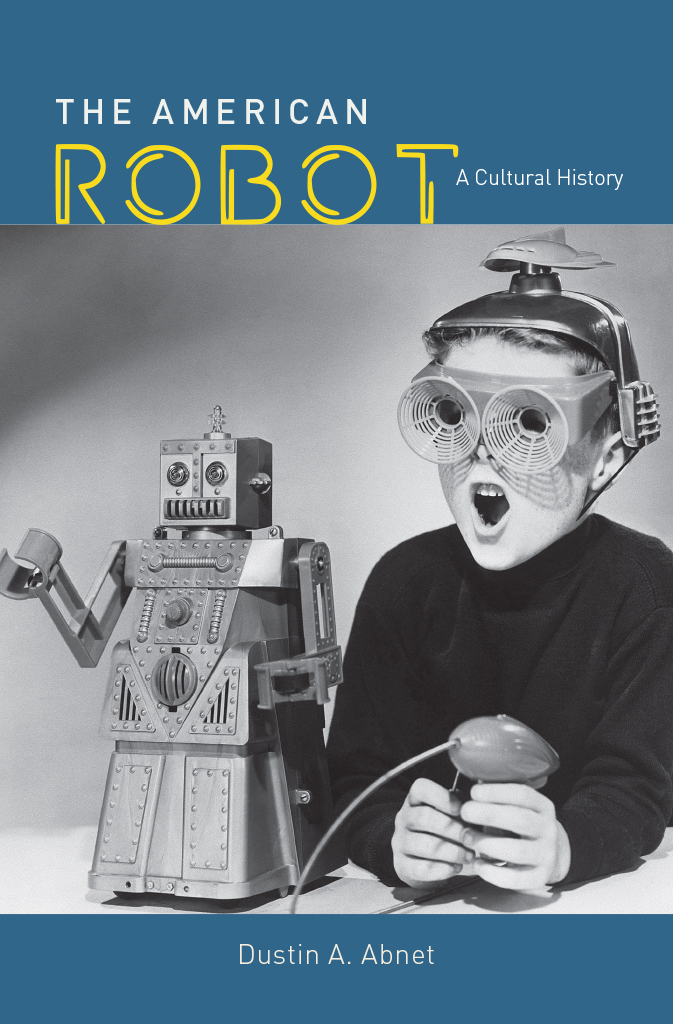
The American Robot
THE AMERICAN ROBOT
A Cultural History
DUSTIN A. ABNET
The University of Chicago Press
Chicago and London
The University of Chicago Press, Chicago 60637
The University of Chicago Press, Ltd., London
2020 by The University of Chicago
All rights reserved. No part of this book may be used or reproduced in any manner whatsoever without written permission, except in the case of brief quotations in critical articles and reviews. For more information, contact the University of Chicago Press, 1427 E. 60th St., Chicago, IL 60637.
Published 2020
Printed in the United States of America
29 28 27 26 25 24 23 22 21 20 1 2 3 4 5
ISBN-13: 978-0-226-69271-5 (cloth)
ISBN-13: 978-0-226-69285-2 (e-book)
DOI: https://doi.org/10.7208/chicago/9780226692852.001.0001
Library of Congress Cataloging-in-Publication Data
Names: Abnet, Dustin A., author.
Title: The American robot : a cultural history / Dustin A. Abnet.
Description: Chicago : University of Chicago Press, 2020. | Includes bibliographical references and index.
Identifiers: LCCN 2019037835 | ISBN 9780226692715 (cloth) | ISBN 9780226692852 (ebook)
Subjects: LCSH: RobotsSocial aspects. | RoboticsSocial aspects.
Classification: LCC TJ211 .A34 2020 | DDC 303.48/3dc23
LC record available at https://lccn.loc.gov/2019037835
 This paper meets the requirements of ANSI/NISO Z39.48-1992 (Permanence of Paper).
This paper meets the requirements of ANSI/NISO Z39.48-1992 (Permanence of Paper).
For Nicole
Contents
An Intimate and Distant Machine
In March 1999, Matt Groenings animated sitcom Futurama introduced audiences to Philip J. Fry, an idiot who falls into a cryogenic tube on December 31, 1999, and awakens exactly one thousand years later. In the interim, humans have traveled through space and met hundreds of alien species. They have invented fantastic and horrifying new technologies. Earth has been invaded, destroyed, and rebuilt multiple times. Yet, this future maintains a curious nostalgia for elements of twentieth-century culture, including the Harlem Globetrotters, Richard Nixon, and 1950s-style hygiene films. When, in a season 3 episode, Fry dates a robot that physically and vocally duplicates the actress Lucy Liu while poorly performing a personality mathematically derived from her movies, his disgusted friends show him one of those hygiene films, I Dated a Robot!
As a teenage boy and girl sit at a diner, a middle-aged white male narrator walks to their table and lectures, Ordinary human dating. Its enjoyable and it serves an important purpose, before flipping their table over to reveal a screaming baby. But when a human dates an artificial mate, there is no purpose. Only enjoyment. And that leads to tragedy. As Billy Everyteen succumbs to the temptations of his Marilyn Monroebot, he grows too lazy to walk his dog, deliver newspapers, or make out with a girl from across the street. In a world where teens can date robots, the narrator asks, why should he bother? Why should anyone bother? Skipping eighty years into the future, viewers see Billy die alone with his robot just before Earth suffers the consequences of his unrestrained pursuit of pleasure: annihilation.
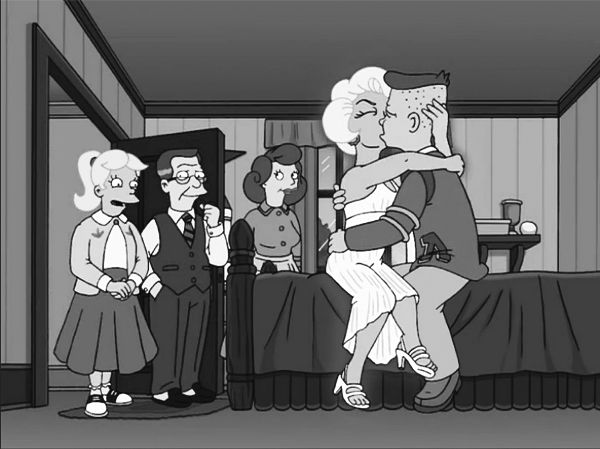
Fig. I.1. Billy Everyteen making out with his Marilyn Monroebot instead of walking his dog, finishing his paper route, or even making out with a human girl in the Futurama episode I Dated a Robot. Animators added a (barely visible) aura around the robot to reinforce the distinction between authentic and inauthentic that the episode satirizes.
Despite its satire, the episode raises numerous questions of increasing importance in an era of advanced automation, artificial intelligence, and digital personas. If a technology can simulate human affection and fulfill individual desires on command, what is the point of risking rejection or laboring to build relationships? Do we lose a sense of purpose by devoting ourselves to easy pleasures offered by technology rather than more difficult tasks? Are we, like the episodes robots, mere algorithms of the data we present to the public, or is there something deeper that defines us that no machine can duplicate? Will the technologies of the twenty-first century enable people to experience the bliss of individual fulfillment, or will the pursuit of our desires destroy society and, with it, ourselves? The episode answers none of these questions; it treats them as jokes because they are as unanswerable as they are fundamental to life in the digital age. Collectively, the questions raised by technology in the twenty-first century are overwhelming; but our culture, like the Futurama episode, has a way of grounding them in an icon that is simultaneously literary and technological, humorous and horrifying, intimate and distant: the robot. A concrete yet symbolic anchor in this maelstrom of questions, the robot tethers our conversations about science, technology, identity, purpose, and power like few other icons or devicesand it has done so, at least in some form, for hundreds of years.
The American Robot is a history of the idea of the robot in American culture. It explores how robots and their kinautomatons, mechanical men and women, androids, artificial intelligence, and cyborgshave embodied and conceptually linked some of the most critical questions of modern culture: What is a human and what is a machine? Does free will exist, or are people merely programmed by internal or external forces? Is the machine a model of human identity and behavior, or its antithesis? What in modern life might make certain people appear machinelike, and what might enable them to maintain their humanity? Which tasks in the home, workplace, or military should be mechanized, and which should be left for people to perform? Does the pursuit of science and technology need to be controlled, and if so, who should have that power? The answers people have given to these and similar questions have rarely been absolute or universal; frequently, they have not even been completely coherent. But in the struggle to answer them, people have imagined, depicted, viewed, and, occasionally, built robots. Robots have been important not just because they have raised questions but because they have spawned fantasies that people have tried to make real. A creature of both fiction and fact, the robot has been a particularly potent force in the cultural history of the United States.
Of course, the robot is neither exclusively American nor modern. The term itself is Czech. Clockwork, steam, and water-powered automatons date to the ancient world, as do stories of robotlike creatures, such as golems and the statue come to life in Pygmalion. In medieval and early modern Europe, automatons were a fixture of both religious and monarchical life, and the devices would remain predominantly European through the nineteenth century. The classic story of robot rebellion duplicates much of the British writer Mary Shelleys Frankenstein. The most significant American writer of robot fiction, Isaac Asimov, emigrated from Russia. Since the proliferation of robotic toys in the 1950s, the figure has been associated with Japanese culture. An ancient and global icon, the robot apparently transcends both geographic and temporal boundaries to address a question that seems universal: what does it mean to be human?
Next page
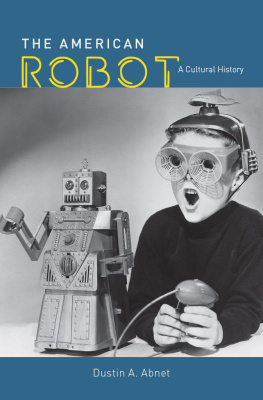
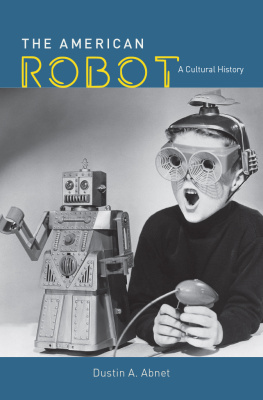
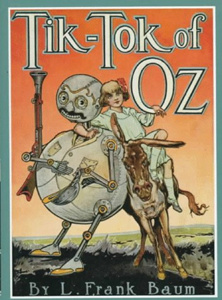
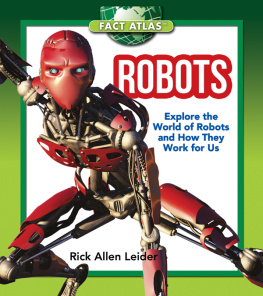
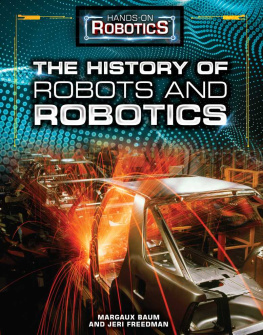
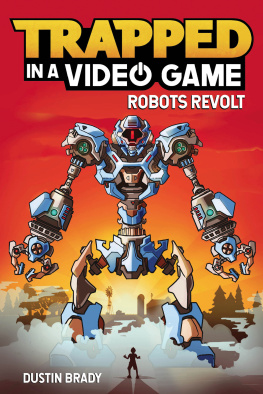

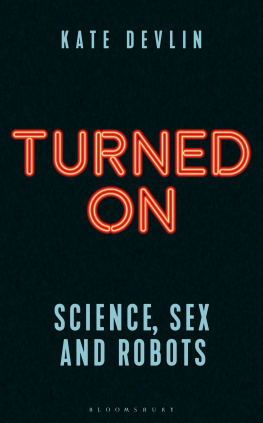
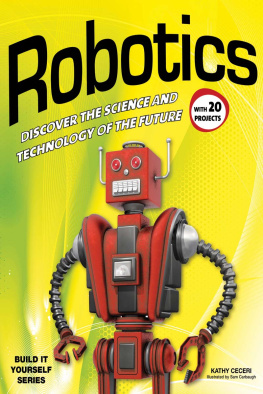
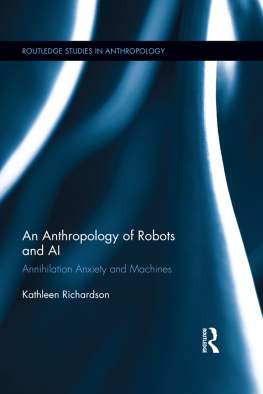
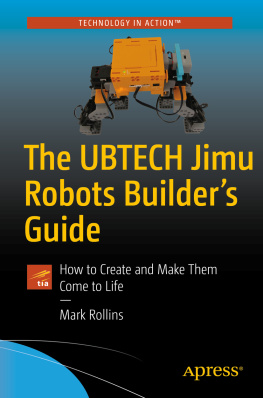
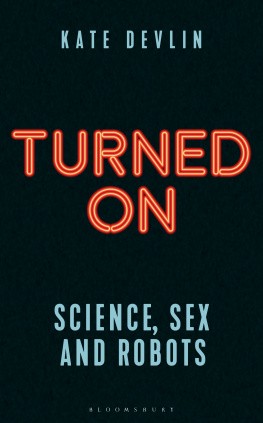

 This paper meets the requirements of ANSI/NISO Z39.48-1992 (Permanence of Paper).
This paper meets the requirements of ANSI/NISO Z39.48-1992 (Permanence of Paper).